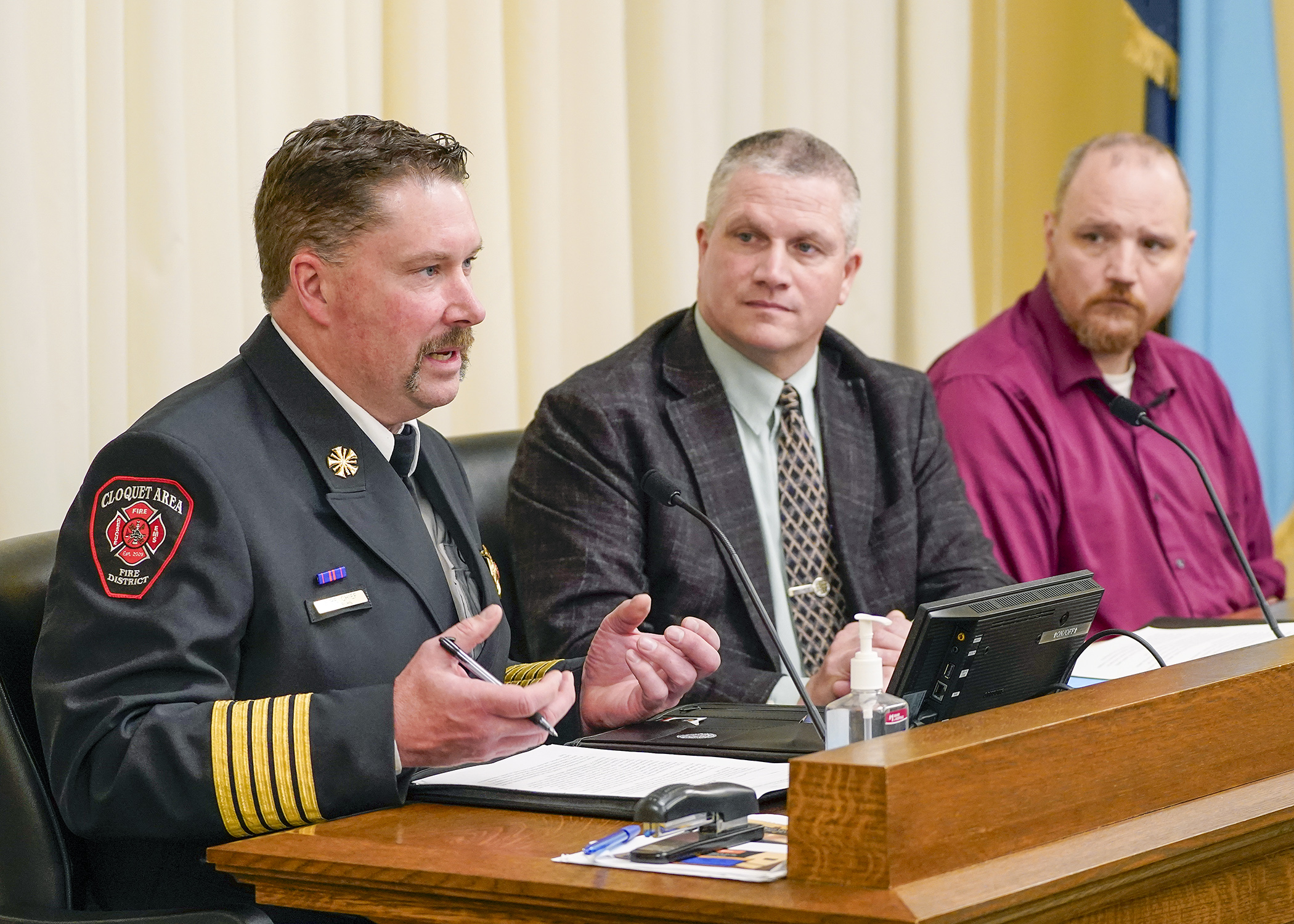Fire, emergency medical services could see state aid bump

When a big boost in state funding was sent to cities and counties in 2023, it was hailed by local leaders as something that would at last provide some relief to residents who had been seeing their property taxes rising annually, straining household budgets.
But not all taxpayer-funded services fit so neatly into those geographical boxes. Fire departments and emergency medical services are often shared by multiple municipalities that can stand across county lines from one another in rural areas. How do you decide who pays what for those shared services?
A 2021 law approved the creation of fire protection and EMS special taxing districts. This allows two or more political subdivisions to pool their resources and collect taxes that would be earmarked for those purposes.
And now a bipartisan bill would create a state aid program expressly for those fire and EMS special taxing districts. Sponsored by Rep. Jeff Dotseth (R-Silver Township), HF526 would send state money to such districts, with their annual aid amounts being equal to 50% of the district’s average certified property tax levy from the last five years.
On Tuesday, the House Taxes Committee laid the bill over, as amended, for possible omnibus bill inclusion.
“An effort to consolidate fire and ambulance services into special districts will be the future for much of our state,” said Jesse Buhs, chief of the Cloquet Area Fire District. “When you eliminate municipal boundaries, they’re no longer a factor in the provision of emergency services. You can take a regional approach.
“That allowed us to eliminate five large firefighting apparatuses, one fire station, multiple different administrations, training programs, response protocols. It all becomes combined and more efficient under one special district.”
The bill would annually appropriate $3.1 million for the aid, with amounts for each district being proportionally reduced until the total aid spent matches the appropriation. Districts established less than six years ago would use the average of all prior-year levy amounts. Annual aid distributions would be certified by Aug. 1 and paid in the following July.
“This is a really big, challenging thing,” said Rep. John Huot (DFL-Rosemount). “Unfortunately, we’re in a bad year. But we, as legislators, really have to look at funding these sources. … We have these failing all over the state. And we have to figure this out.”
“This aid will lessen what can seem like an insurmountable economic barrier in establishing a new special district,” Buhs said. “We need to create long-term sustainability for fire and EMS in our state.”
Related Articles
Search Session Daily
Advanced Search OptionsPriority Dailies
Speaker Emerita Melissa Hortman, husband killed in attack
By HPIS Staff House Speaker Emerita Melissa Hortman (DFL-Brooklyn Park) and her husband, Mark, were fatally shot in their home early Saturday morning.
Gov. Tim Walz announced the news dur...
House Speaker Emerita Melissa Hortman (DFL-Brooklyn Park) and her husband, Mark, were fatally shot in their home early Saturday morning.
Gov. Tim Walz announced the news dur...
Lawmakers deliver budget bills to governor's desk in one-day special session
By Mike Cook About that talk of needing all 21 hours left in a legislative day to complete a special session?
House members were more than up to the challenge Monday. Beginning at 10 a.m...
About that talk of needing all 21 hours left in a legislative day to complete a special session?
House members were more than up to the challenge Monday. Beginning at 10 a.m...